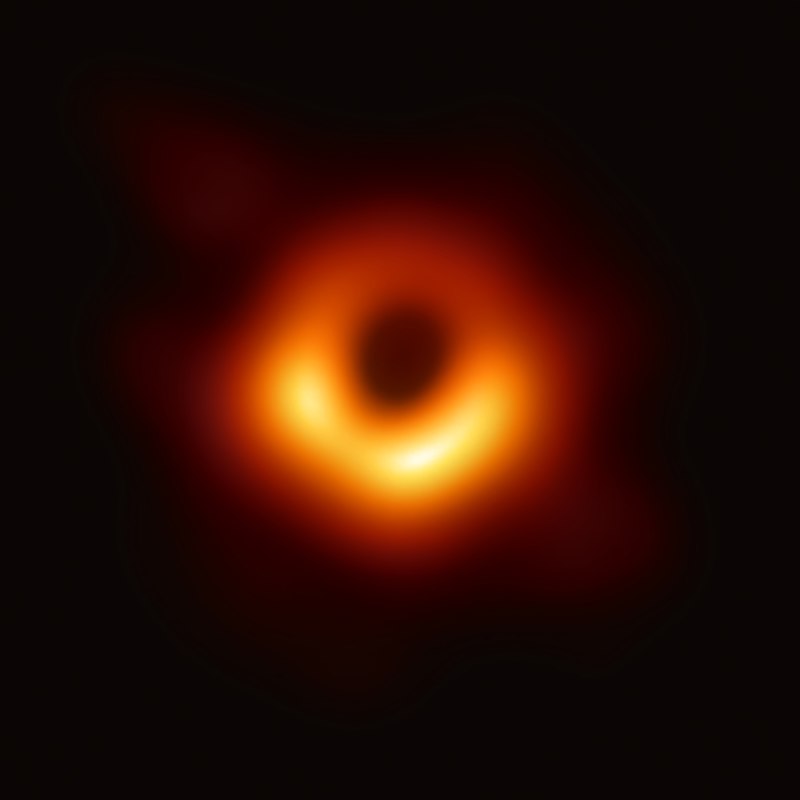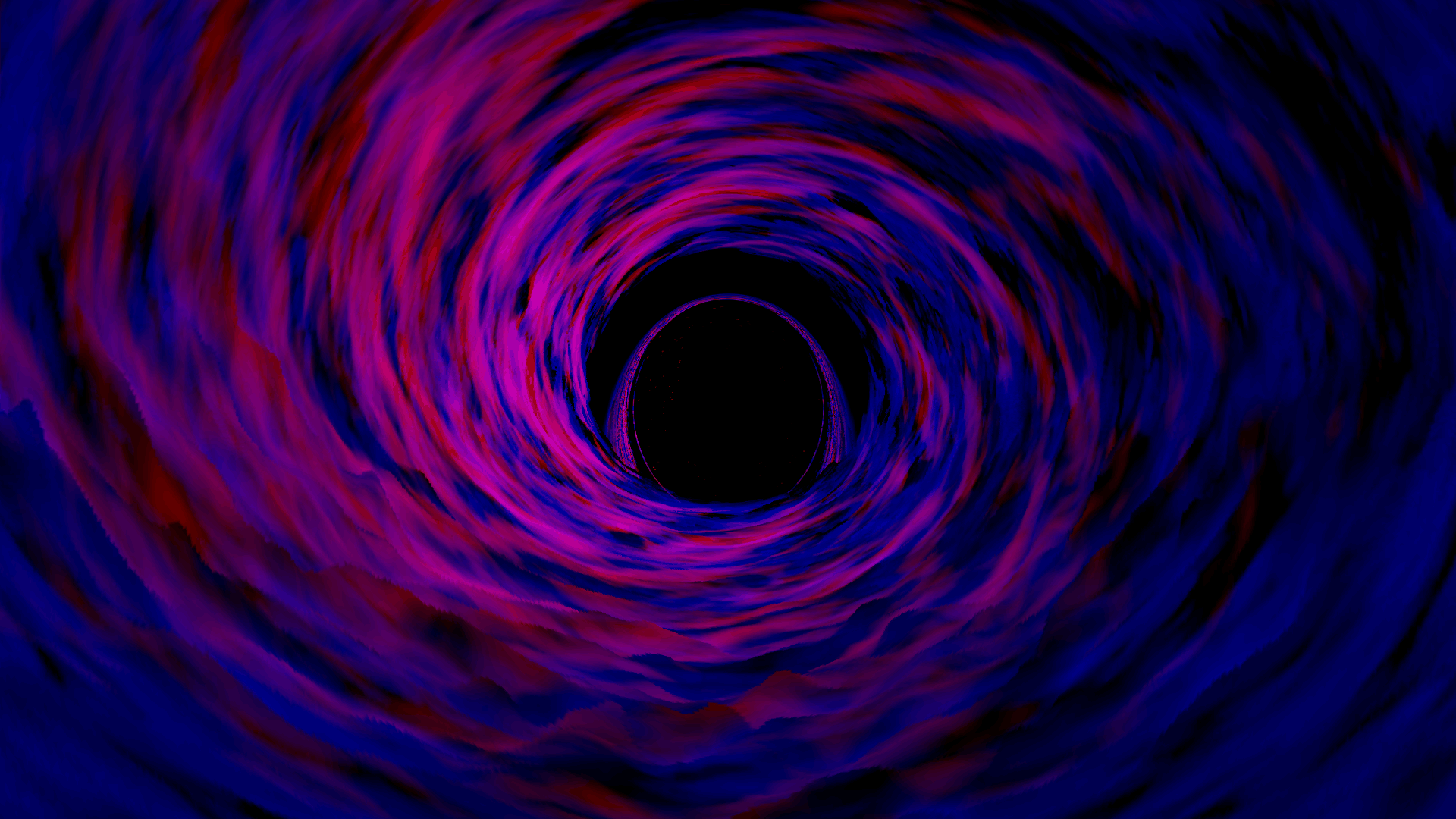Astronomers continue to develop computer simulations to help future observatories better home in on black holes, the most elusive inhabitants of the universe.
Though black holes likely exist abundantly in the universe, they are notoriously hard to see. Scientists did not capture the first radio image of a black hole until 2019, and only about four dozen black hole mergers have been detected through their signature gravitational ripples since the first detection in 2015.
That is not a lot of data to work with. Scientists look to black hole simulations to gain crucial insight that will help find more mergers with future missions. Some of these simulations, created by scientists like astrophysicist Scott Noble, track supermassive binary black hole systems. That is where two monster black holes like those found in the centers of galaxies orbit closely around each other until they eventually merge.
The simulations, created by computers working through sets of equations too complicated to solve by hand, illustrate how matter interacts in merger environments. Scientists can use what they learn about black hole mergers to identify some telltale characteristics that let them distinguish black hole mergers from stellar events. Astronomers can then look for these telltale signs and spot real-life black hole mergers.
Noble, who works at NASA’s Goddard Space Flight Center in Greenbelt, Maryland, said these binary systems emit gravitational waves and influence surrounding gases, leading to unique light shows detectable with conventional telescopes. This allows scientists to learn about different aspects of the same system. Multimessenger observations that combine different forms of light or gravitational waves could allow scientists to refine their models of black hole binary systems.
“We’ve been relying on light to see everything out there,” Noble said. “But not everything emits light, so the only way to directly ‘see’ two black holes is through the gravitational waves they generate. Gravitational waves and the light from surrounding gas are independent ways of learning about the system, and the hope is that they will meet up at the same point.”
Binary black hole simulations can also help the Laser Interferometer Space Antenna (LISA) mission. This space-based gravitational wave observatory, led by the European Space Agency with significant contributions from NASA, is expected to launch in 2034. If simulations determine what electromagnetic characteristics distinguish a binary black hole system from other events, scientists could detect these systems before LISA flies, Noble said. These observations could then be confirmed through additional detections once LISA launches.
That would allow scientists to verify that LISA is working, observe systems for a longer period before they merge, predict what is going to happen, and test those predictions.
“We’ve never been able to do that before,” Noble said. “That’s really exciting.”
The simulations rely on code which describes how the density and pressure of plasma changes in strong-gravity regions near a single black hole or neutron star, Noble said. He modified the code to allow for two black holes to evolve.
Noble is working with Goddard and university partners, including Bernard Kelly at the University of Maryland, Manuela Campanelli leading a team of researchers at the Rochester Institute of Technology, and Julian Krolik leading a Johns Hopkins University research team.
Kelly creates simulations using a special approach called a moving puncture simulation.
These simulations allow scientists to avoid representing a singularity inside the event horizon — the part of the black hole from which nothing can escape, Kelly said. Everything outside of that event horizon evolves, while the objects inside remain frozen from earlier in the simulation. This allows scientists to overlook the fact that they do not know what happens within an event horizon.
To mimic real-life situations, where black holes accumulate accretion disks of gas, dust, and diffuse matter, scientists have to incorporate additional code to track how the ionized material interacts with magnetic fields.
“We’re trying to seamlessly and correctly glue together different codes and simulation methods to produce one coherent picture,” Kelly said.
In 2018, the team published an analysis of a new simulation in The Astrophysical Journal that fully incorporated the physical effects of Einstein’s general theory of relativity to show a merger’s effects on the environment around it. The simulation established that the gas in binary black hole systems will glow predominantly in ultraviolet and X-ray light.
Simulations also showed that accretion disks in these systems are not completely smooth. A dense clump forms orbiting the binary, and every time a black hole sweeps close, it pulls off matter from the clump. That collision heats up the matter, producing a bright signal and creating an observable fluctuation of light.
In addition to improving their confidence in the accuracy of the simulations, Goddard astrophysicist Jeremy Schnittman said they also need to be able to apply the same simulation code to a single black hole or a binary and show the similarities and also the differences between the two systems.
“The simulation are going to tell us what the systems should look like,” Schnittman said. “LISA works more like a radio antenna as opposed to an optical telescope. We’re going to hear something in the universe and get its basic direction, but nothing very precise. What we have to do is take other telescopes and look in that part of the sky, and the simulations are going to tell us what to look for to find a merging black hole.”
Kelly said LISA will be more sensitive to lower gravitational wave frequencies than the current ground-based gravitational wave observer, the Laser Interferometer Gravitational-Wave Observatory (LIGO). That means LISA will be able to sense smaller-mass binary systems much earlier and will likely detect merging systems in time to alert electromagnetic telescopes.
For Schnittman, these simulations are key to understanding the real-life data LISA and other spacecraft collect. The case for models may be even stronger for binary black holes, Schnittman said, because the scientific community has little data.
“We probably will never find a binary black hole with a telescope until we simulate them to the point we know exactly what we’re looking for, because they’re so far away, they’re so tiny, you’re going to see just one speck of light,” Schnittman said. “We need to be able to look for that smoking gun.”
By Emma Edmund
































